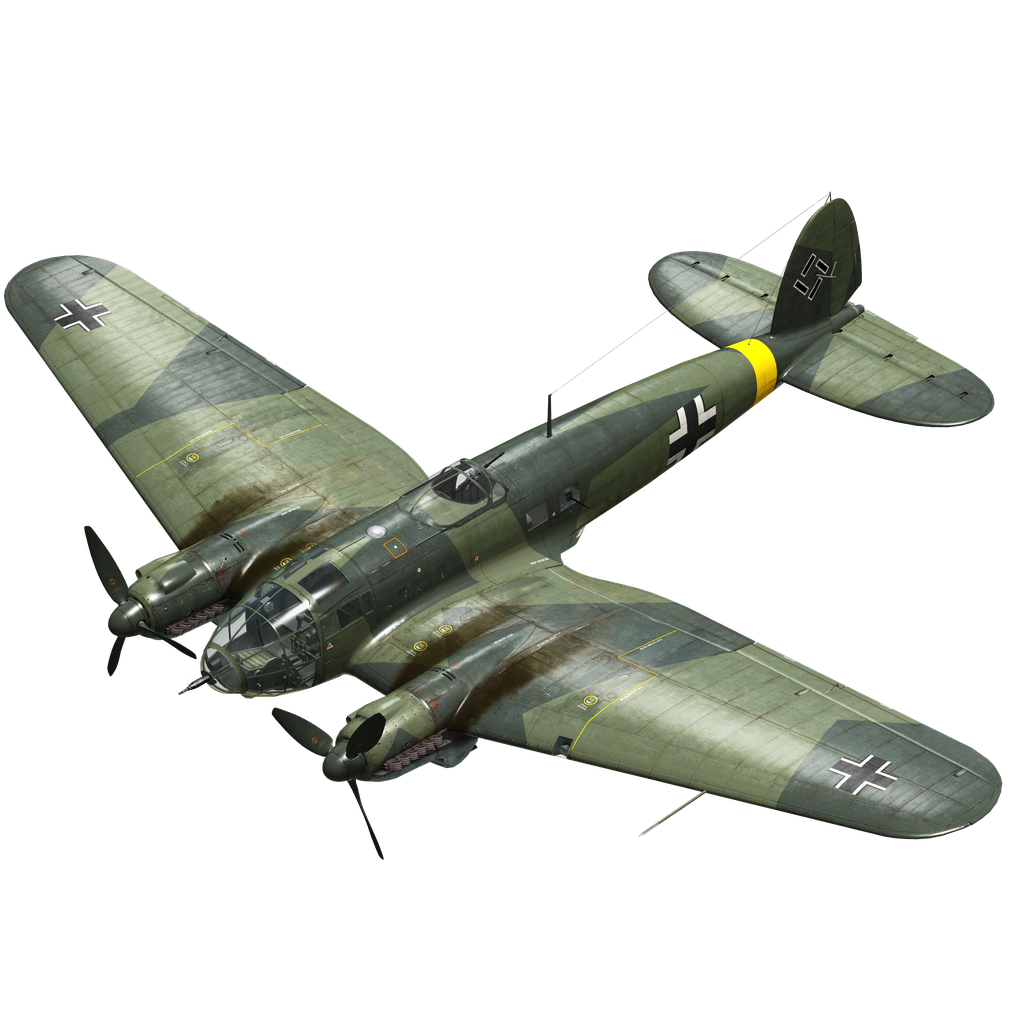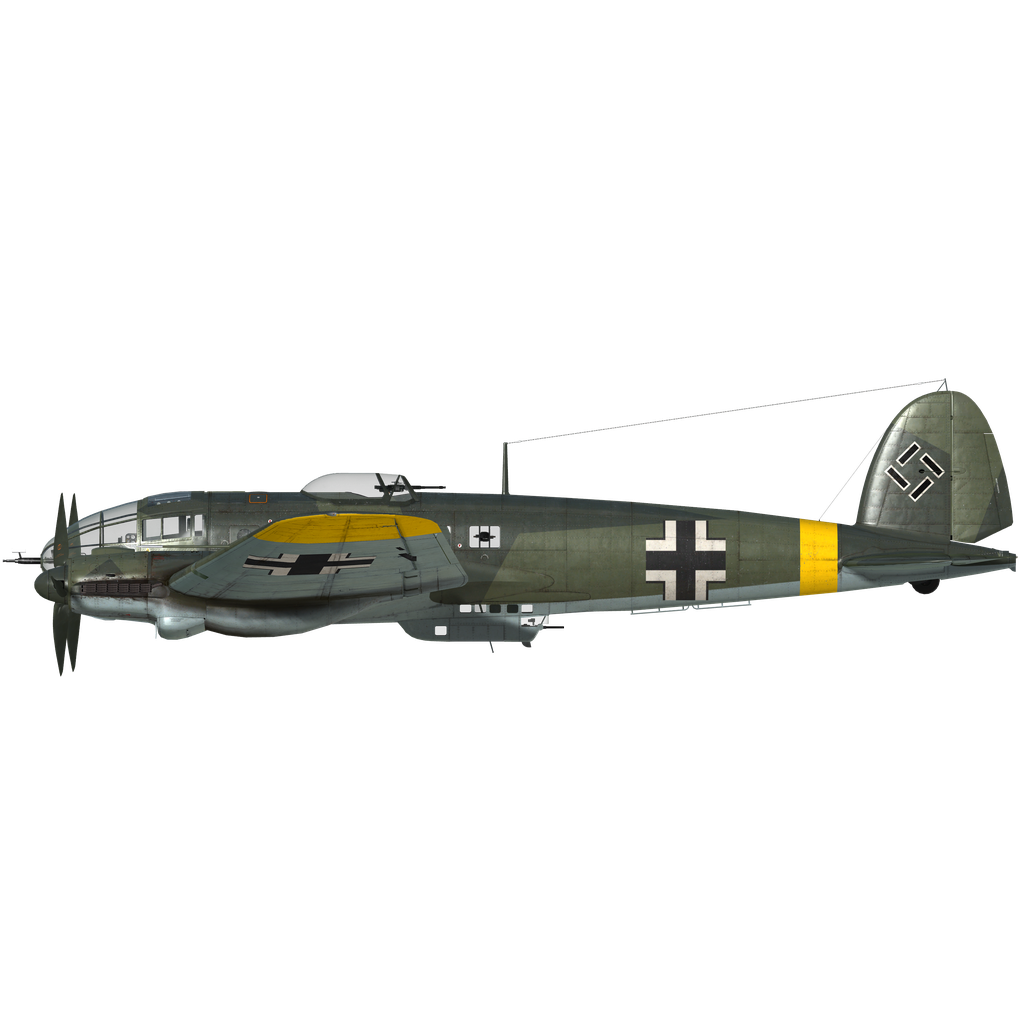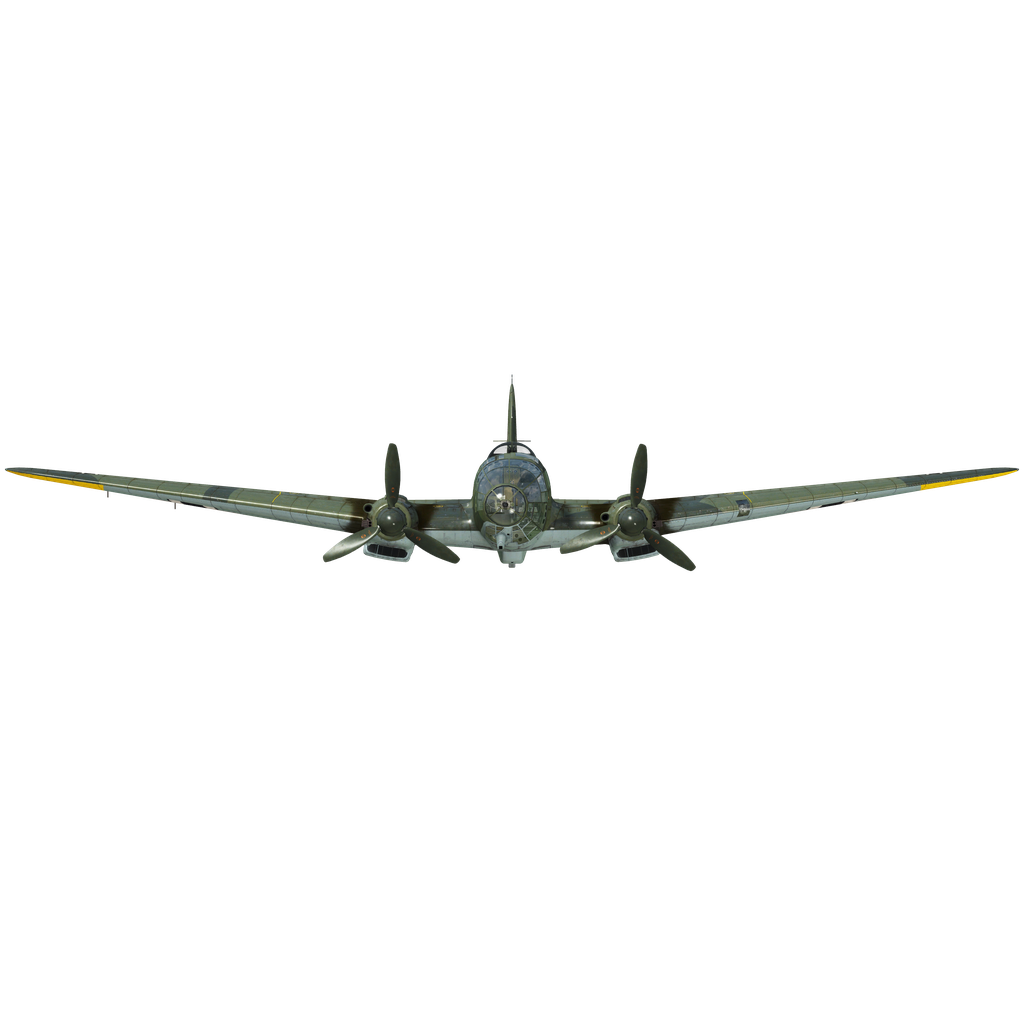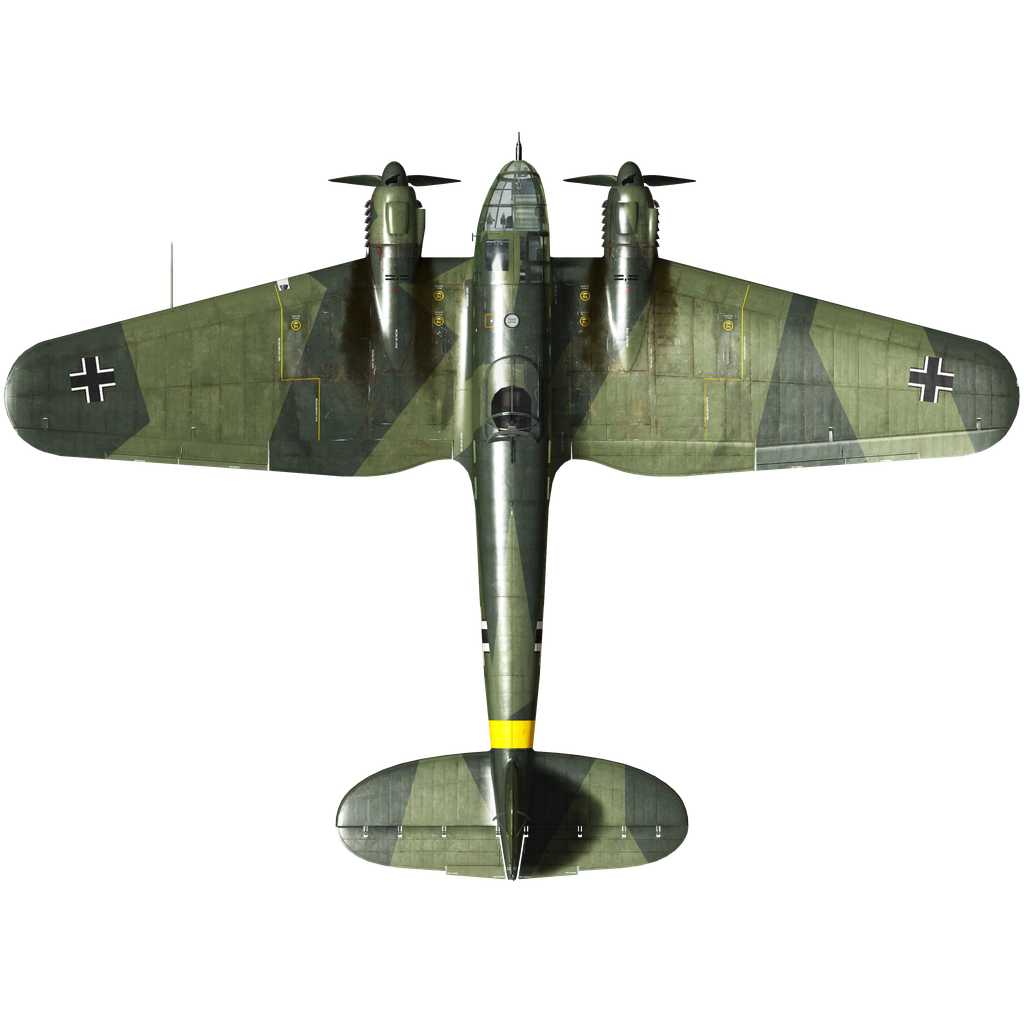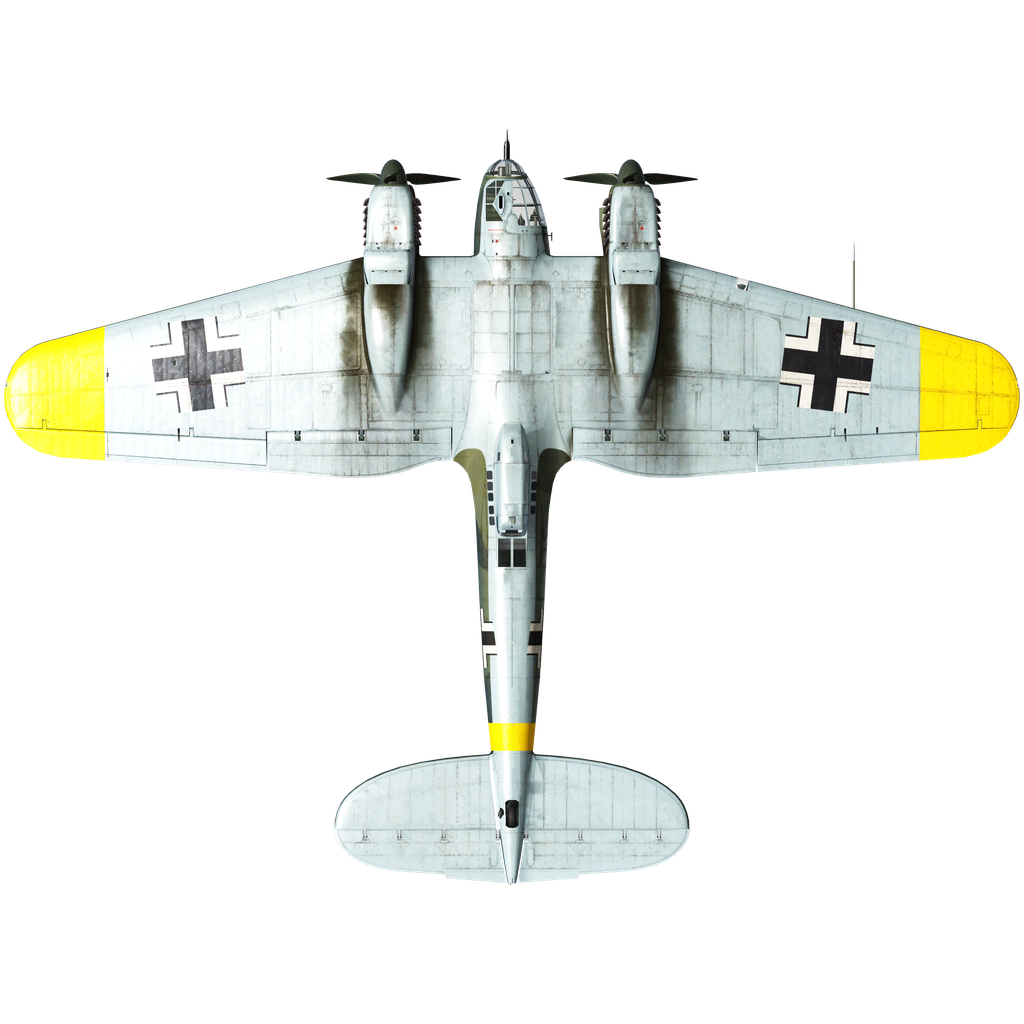Since the provisions of the Treaty of Versailles prohibited Germany from having an air force, the Germans disguised the development of military aircraft as civilian projects until 1935, but immediately designed passenger aircraft as bombers. One of the machines created this way was the He 111, which turned out to be a good bomber and a mediocre passenger plane. From 1936 to 1941, bombers of the A, B, D, E, J, and P series were produced with engines from Daimler-Benz and Jumo. However, since the DB 601 engine was mainly used in fighter aircraft, parallel to the He 111 P, the He 111H was also produced with Jumo 211 engines.
The next mass production modification of the H-family bombers was the He 111 H-16, which went into serial production in December 1942. The powerplant with Jumo 211F-2 engines was taken from the H-6 and the weapons and armor protection from the H-11. The bombs were mounted inside or outside the fuselage, the latter allowing additional fuel tanks to take up space inside the aircraft. The H-16 retained eight ESAC bomb racks in the bomb bay, although the four left racks could be replaced by an 835-liter tank. ETS 2000 mounts were used for externally suspended bombs. Two SC 250 bombs or 32 SC 50 bombs in cassettes could be carried externally, or four SC 250s in the bomb bay and one SC 1000 on an external mount. The use of R-unit solid propellant launchers mounted under the wing increased the maximum bomb load from 2000 kg to 3000 kg.
The defensive armament consisted of an MG/FF cannon in the nose, the lower forward firing point in the ventral gondola was removed and a 7.92 mm twin MG 81Z machine gun was installed in the rear. A 13.2 mm MG 131 machine gun was installed in the upper firing point to protect the rear hemisphere; the drum-fed MG 17 machine guns in the side windows were replaced by belt-fed MG-81 machine guns.
-
H-16/R1: instead of the usual upper firing point, an electrically driven turret for a 13mm MG 131 machine gun was installed;
-
H-16/R2: Glider towing plane with metal towing gear from Weser Flugzeugbau;
-
The H-16/R3 was characterized by additional armor protection and a reduced bomb load, which was placed only inside the fuselage. It had two variants, H-16/R3/U1 and H-16/R3/U2, which differed in the type of bomb rack.
By the middle of the war, German troops were increasingly surrounded. To supply them, they developed the Dobbas unmanned cargo glider, which had the appearance of a very short and thick wing. It had no landing gear and landed on its belly. It could carry food, ammunition, weapons, a motorcycle with a sidecar, or a 75 mm antitank gun. The device was suspended from the H-16's belly bomb rack and released from a low altitude onto soft ground or snow. Tests were carried out, but there is no data on the use of Dobbas at the front.
Some of the He-111 H-16s were converted in 1944 to carry Fi 103 cruise missiles. Launching a missile at night in the direction of a large city at an altitude of 500 m, the probability of a hit was very high. From July 1944 the III. Gruppe of Kampfgeschwader 3 used the H-16 along with other missile carriers to launch missiles at London and Southampton.
From the end of 1942 to the end of 1943, the factories produced 1,155 He-111 H-16 bombers; during the same period, 280 H-6s and 35 H-11s were upgraded to the H-16 variant. Although the He 111 became primarily a transport aircraft in 1943, it was also used quite often as a bomber, especially on the Eastern Front.
1. W. Creen “The Warplanes of the Third Reich”, Galahad Books, 1986
2. “Wings of the Luftwaffe” Translation of V. Green’s book “Combat Aircraft of the Third Reich” by A. Firsov, 1993
3. Materials from the site airwar.ru
4. “Heinkel He 111 Photo Archive” War in the Air No. 102, 2000
